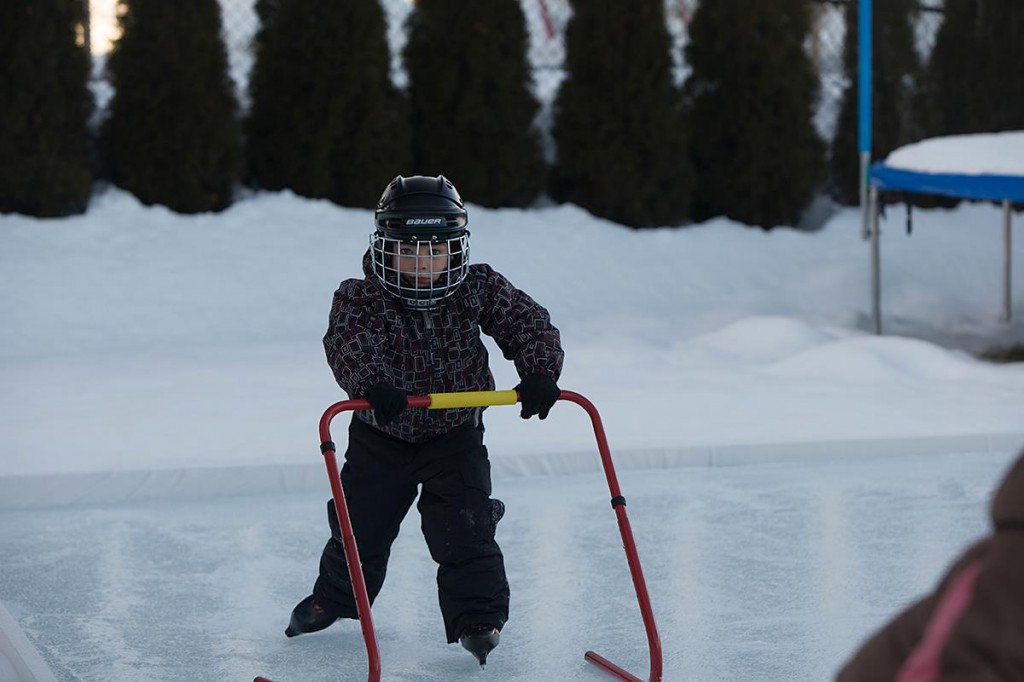Is it wrong that, two days after James’ diagnosis of autism spectrum disorder, I feel more relaxed and at peace than I have in about four years?
Ever since James was about 2, we’ve been on this long, hard uphill slog. And Friday was, in a word, wrenching. Our appointment with the assessment team and James’ teacher was scheduled for 12:30, so the morning was awful because I spent it with lead-stomached dread, terrified that, once again, James would fall just a hair below the mystical “diagnostic threshold.” Once again, he’d be labeled with multiple, rather fuzzy disorders rather than the single disorder that handily explains all his differences and provides a proven game plan for some sort of remediation. I was practically certain of this. All morning, I couldn’t eat a mouthful and my heart was galloping, despite my consumption of a single cup of coffee before noon.
Friday evening, although James received exactly the diagnosis we’d known he would ever since I noticed certain autistic traits four years ago, I was reeling with the grave finality of the words on his official diagnosis folder (yes, along with a diagnostic label, you receive an enormous folder full of information and therapy options. I’ve read maybe a third of it. It’s thick.). Even though I knew — KNEW — the team was wrong two years ago when they said he did not have a spectrum disorder — “merely” an expressive language disorder (not specified), anxiety disorder (not specified) and Oppositional Defiant Disorder — oh, and sensory issues, too — I apparently secretly harbored a faint glimmer of hope that the psychiatrist was right. That James had global delays from being premature, and that all he needed was a bit of speech therapy and a few years of development and that, by age 8, everything would even out and he’d be like every other 8-year-old. That, as an adult, he’d have no problem living on his own and would have a job and a spouse and that when we died, there wouldn’t be a question of what would happen to James. Who wouldn’t want that?
Of course, when your child has spent hours (years, if you add it up) lining up toys and echoing your words back to you and having hourlong tantrums about his clothes, you know. Even when he makes great strides and now he’s just that weird kid whose conversations are a little non-sequitur-heavy and he punches his favorite classmate (not best friend, because he doesn’t have friends in the strict sense of the word) for tapping him on the shoulder from behind, you know. He is still the same kid he was two years ago, when he got the non-diagnosis, and four years ago when he screamed and wailed through music class because it interrupted his repetitive rolling of the wheels on his omnipresent toy school bus.
The psychiatrist who ran both assessments said that they had expected to see the gap between James and his peers narrow, but that it had widened instead. Which is great for James, because now he doesn’t fall short of this arbitrary threshold that for two years prevented him for qualifying for therapies, but also heartbreaking because it means that yes, he has a neurological difference, not a cluster of delays. And it means that we’ve missed four years of early interventions, no matter what the team said about James still being “young.” If he’d been diagnosed at 2, where would he be now?
I had always expected to feel a great sense of relief after James got a proper diagnosis (as anticipated, the psychiatrist called it PDD-NOS, which is hard to describe as it’s sort of a catch-all spectrum diagnosis, but in James’ case it basically means something like Asperger’s with a speech delay thrown in). Instead of feeling as though a weight had been lifted, on Friday, I simply felt numb and sad. It’s as though — as much as I raged against the non-diagnosis in 2010 — its predictions of normalcy had allowed just enough hope to prevent the grieving one might do if one had some sort of certainty.
Luckily, after a little time to digest what has been so evident for years, I’ve felt a sort of lightness yesterday and today. James is going to have an Individualized Education Program (IEP) and funding to be distributed both to his school and the therapy providers of our choosing. In his giant folder rests a hefty sheaf of info on support groups for parents and special-needs sports teams and programs for kids on the spectrum. And, while it shouldn’t matter (but does, to me), we now have the official paperwork to prove that no, our kid is not just a noisy spaz who didn’t respond to your kid’s random question because he’s been raised with no manners; he has a diagnosable disability so just stop glaring at him already.
It’s been an arduous journey full of tears, frustration, loneliness and not a little anger at the system, and now, it feels as I imagine it does when one reaches the summit of Everest and looks out to see the world at one’s feet. James is still the same James he was at 4 and at 2 and as a beautiful, tiny premie — sweetness and volatility, the most likely of our children both to punch you and to let you sleep with his stuffed bunny for 10 nights (no more, no less). And yet everything is different, because there will be help, a plan, an explanation. A new world is at his feet. And a new world’s at my feet, too, because finally, I can lay down the backpack and look at the view. The seemingly endless uphill trek is over. Time to rest and survey how far we’ve come. We’ll start climbing the next mountain soon enough.
